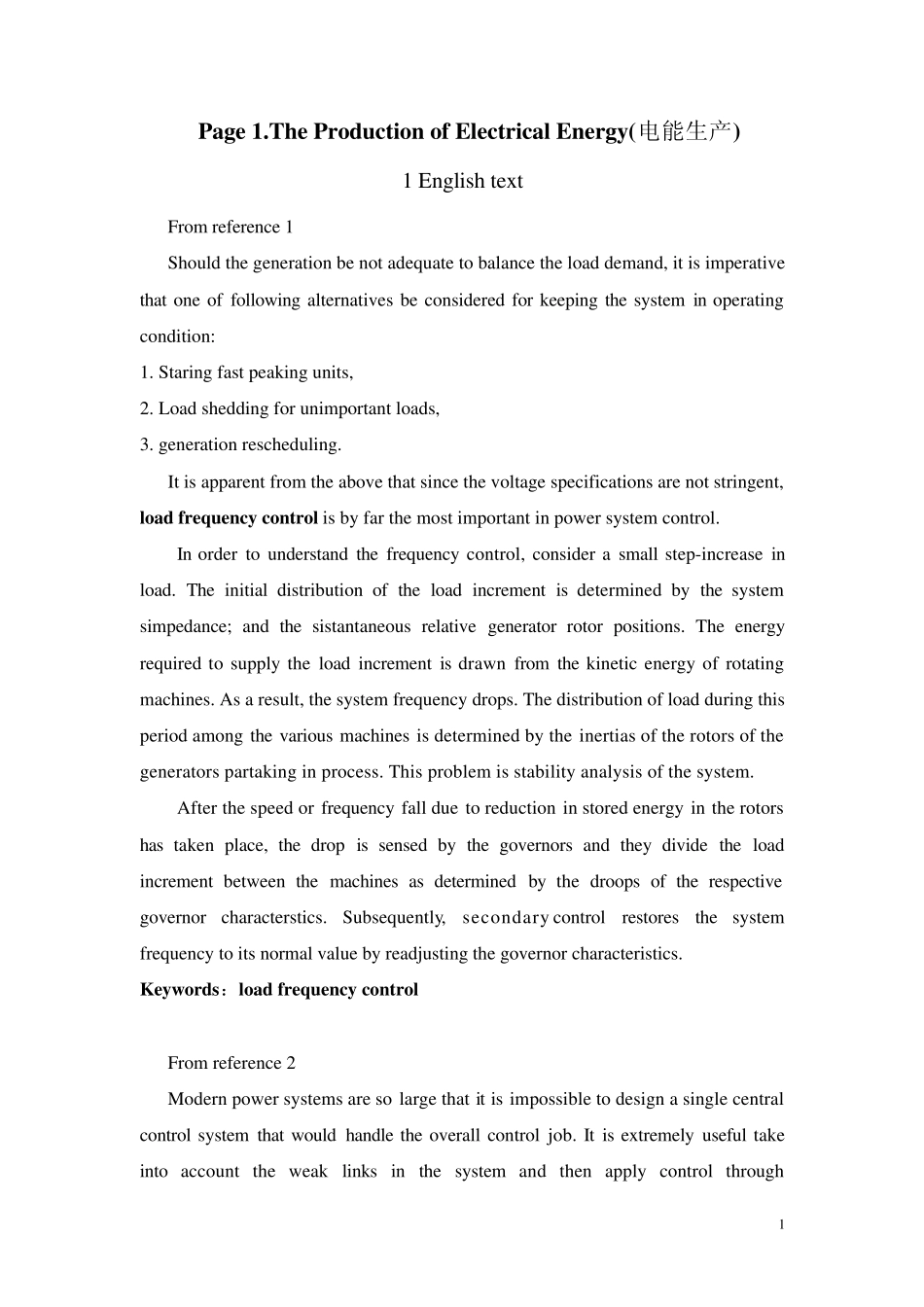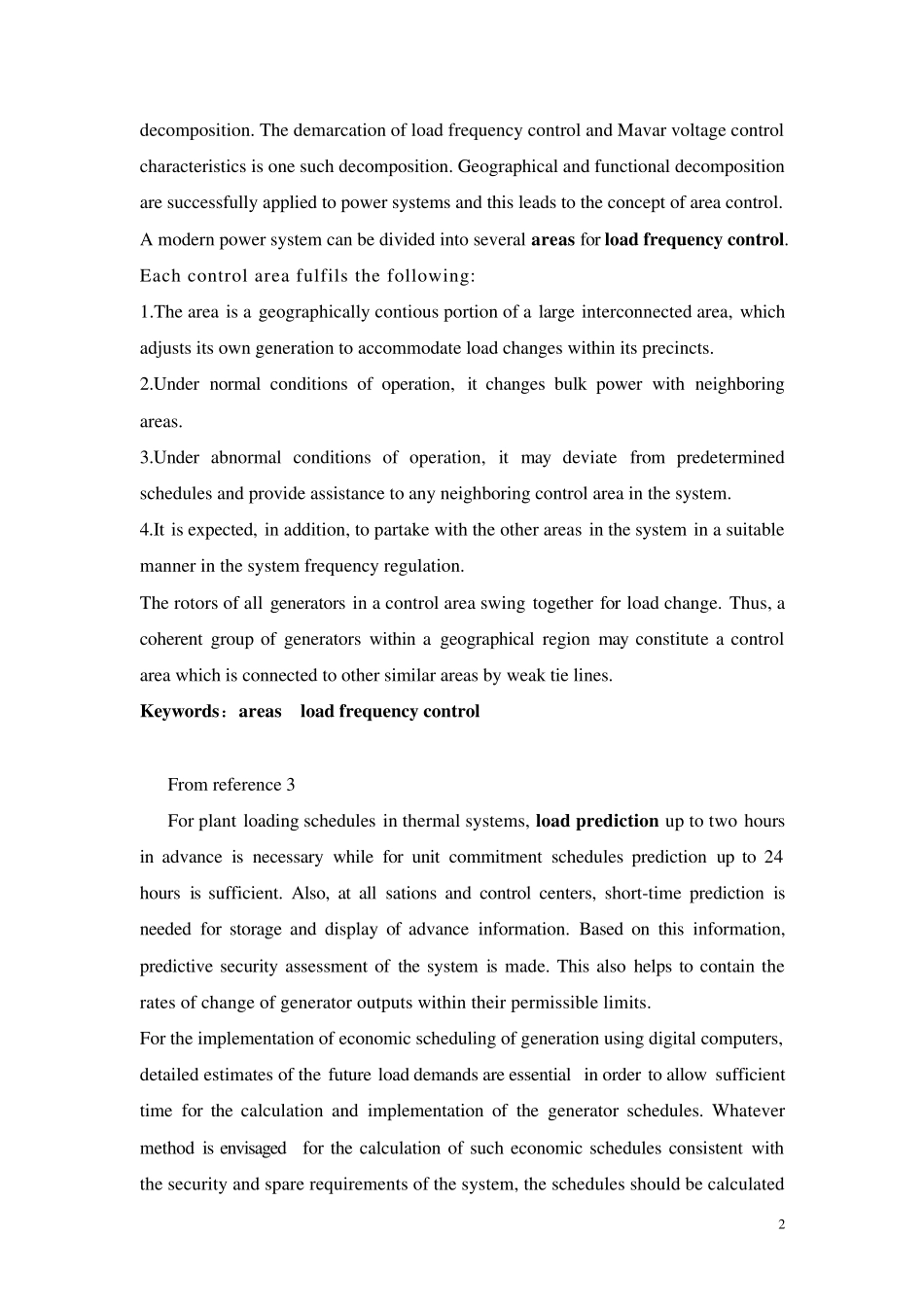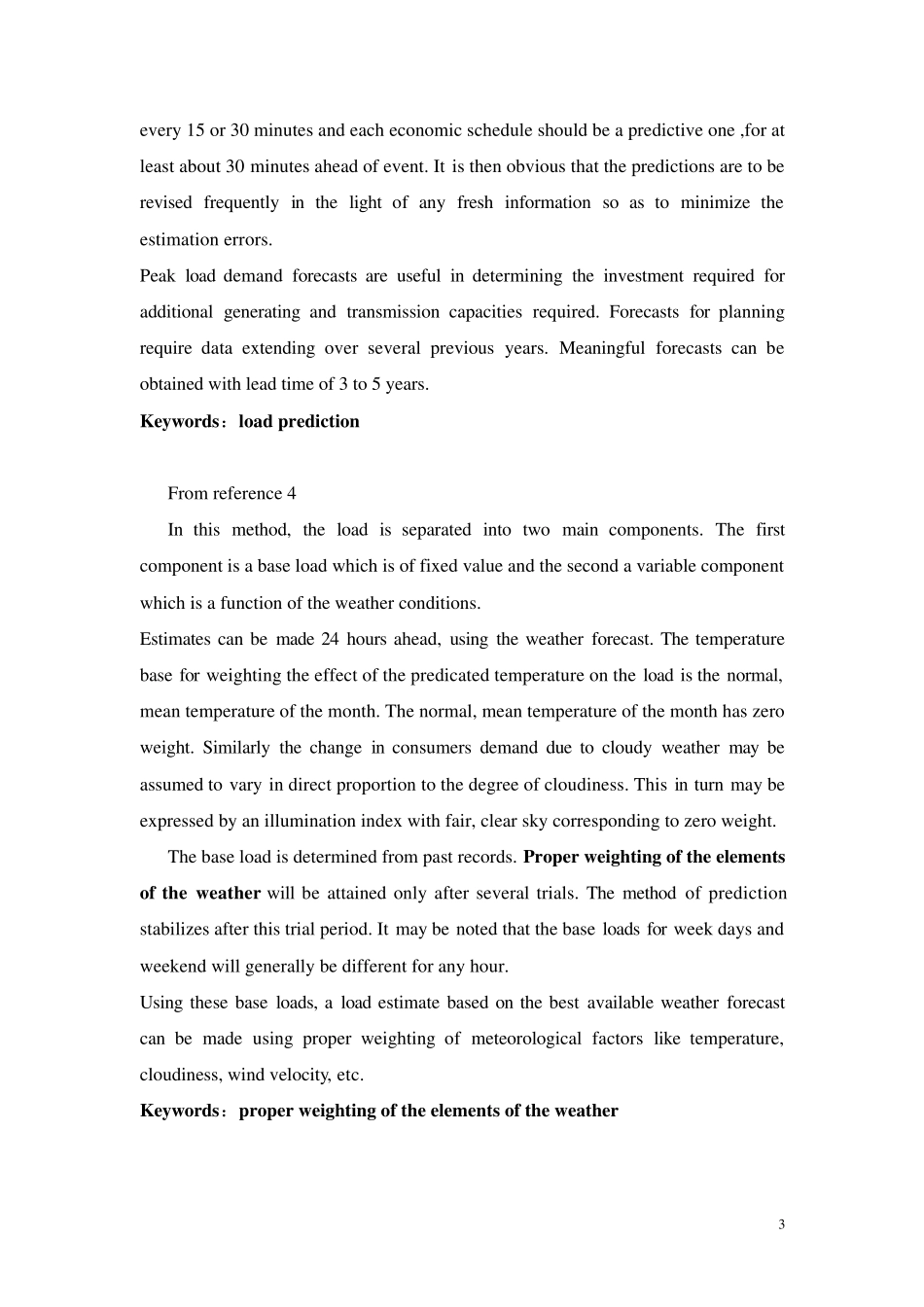1 Page 1.The Production of Electrical Energy(电能生产) 1 English text From reference 1 Should the generation be not adequate to balance the load demand, it is imperative that one of following alternatives be considered for keeping the system in operating condition: 1. Staring fast peaking units, 2. Load shedding for unimportant loads, 3. generation rescheduling. It is apparent from the above that since the voltage specifications are not stringent, load frequency control is by far the most important in power system control. In order to understand the frequency control, consider a small step-increase in load. The initial distribution of the load increment is determined by the system simpedance; and the sistantaneous relative generator rotor positions. The energy required to supply the load increment is drawn from the kinetic energy of rotating machines. As a result, the system frequency drops. The distribution of load during this period among the various machines is determined by the inertias of the rotors of the generators partaking in process. This problem is stability analysis of the system. After the speed or frequency fall due to reduction in stored energy in the rotors has taken place, the drop is sensed by the governors and they divide the load increment between the machines as determined by the droops of the respective governor characterstics. Subsequently, secondary control restores the system frequency to its normal value by readjusting the governor characteristics. Keywords:load frequency control From reference 2 Modern power systems are so large that it is impossible to design a single central control system that would handle the overall control job. It is extremely useful take into accoun...


